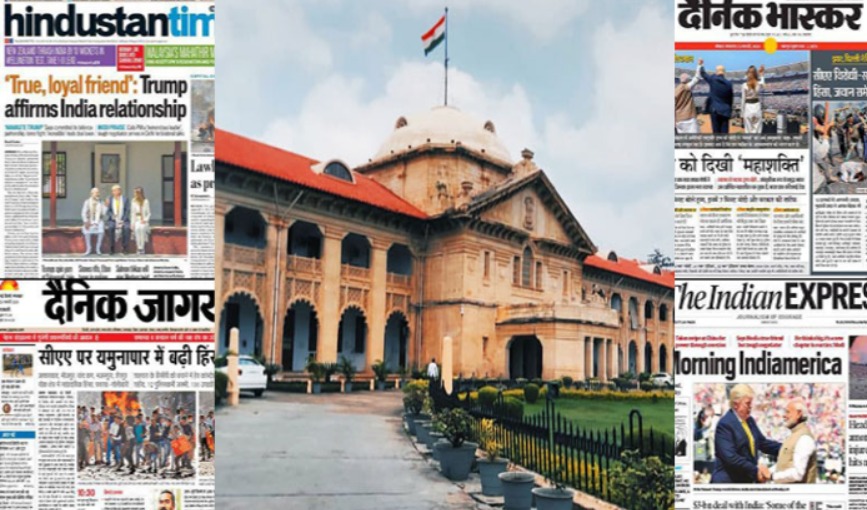
The Allahabad High Court recently observed that a newspaper report is not a “legal evidence” while allowing a petition filed against a detention order passed under the National Security Act.
The division bench of Justice Mahesh Chandra Tripathi and Justice Nalin Kumar Srivastava noted that when the impugned detention order was passed, much emphasis was placed on a murder case involving the detainee/petitioner, and media clippings were used as proof of disruption of public order.
“The newspaper report by itself does not constitute an evidence of the contents. The reports are moreover hearsay evidence. The newspaper reports are at best secondary evidence and not admissible in evidence without proper proof of its content under the Indian Evidence Act, 1872”, the bench stated.
A newspaper report, the court added, is not “legal evidence” that can be examined in support of the complainant, and it is trite law that there must be legal evidence in support of the allegations levelled against a person.
As a result, the court quashed the impugned detention order and the subsequent orders, observing that the only evidence relied on in this case was the newspaper reporting and nothing else.
The court was hearing a Habeas Corpus petition filed by Saud Akhtar and another individual. The petitioners sought a certiorari order quashing the detention order issued by the District Magistrate of Kanpur Nagar on March 31, 2022, under Section 3 (2) of the National Security Act, 1980, against Saud Akhtar.
Akhtar was charged in 34 criminal cases, including a murder and a Gangster Act violation. While passing the detention order, the DM had based her satisfaction for invocation of proceedings under NSA essentially on the criminal history of Akhtar.
He was already imprisoned in connection with the murder case when the proceedings for the detention order were initiated. Later, in February 2022, Akhtar was granted bail in the case. However, owing to the detention order, he remained confined.
Akhtar’s counsel contended before the high court that a stale incident from 2020 was used to justify the detention order, and that the media clippings were used as the sole proof of disruption of public order because there were no eyewitnesses to the incident on record.
He claimed that the District Magistrate had not applied her mind when issuing the detention order and had done so in a routine manner based on the report submitted to her by the police authorities.
The government counsel objected to the petition, claiming that because of the murder case, the public order and tranquilly of the area had been disrupted, and because Akhtar’s bail application was pending before the court, proceedings for the detention order had been initiated.
However, the court noted that there was no live link between the 2020 incident and the action for which the detention order was issued.
“The order of detention indicated cases relating to law and order situations and had nothing to do with public order maintenance and was stale to be considered relevant for the purpose of detention,” the court stated.Moreover, court stated that the DM had not recorded her satisfaction in the impugned order that there was a real possibility of Akhtar being released on bail. “(this)omission in our opinion has totally vitiated the impugned order,” thecourt opined.
As a result, the court overturned the impugned order and ordered Akhtar’s release.




